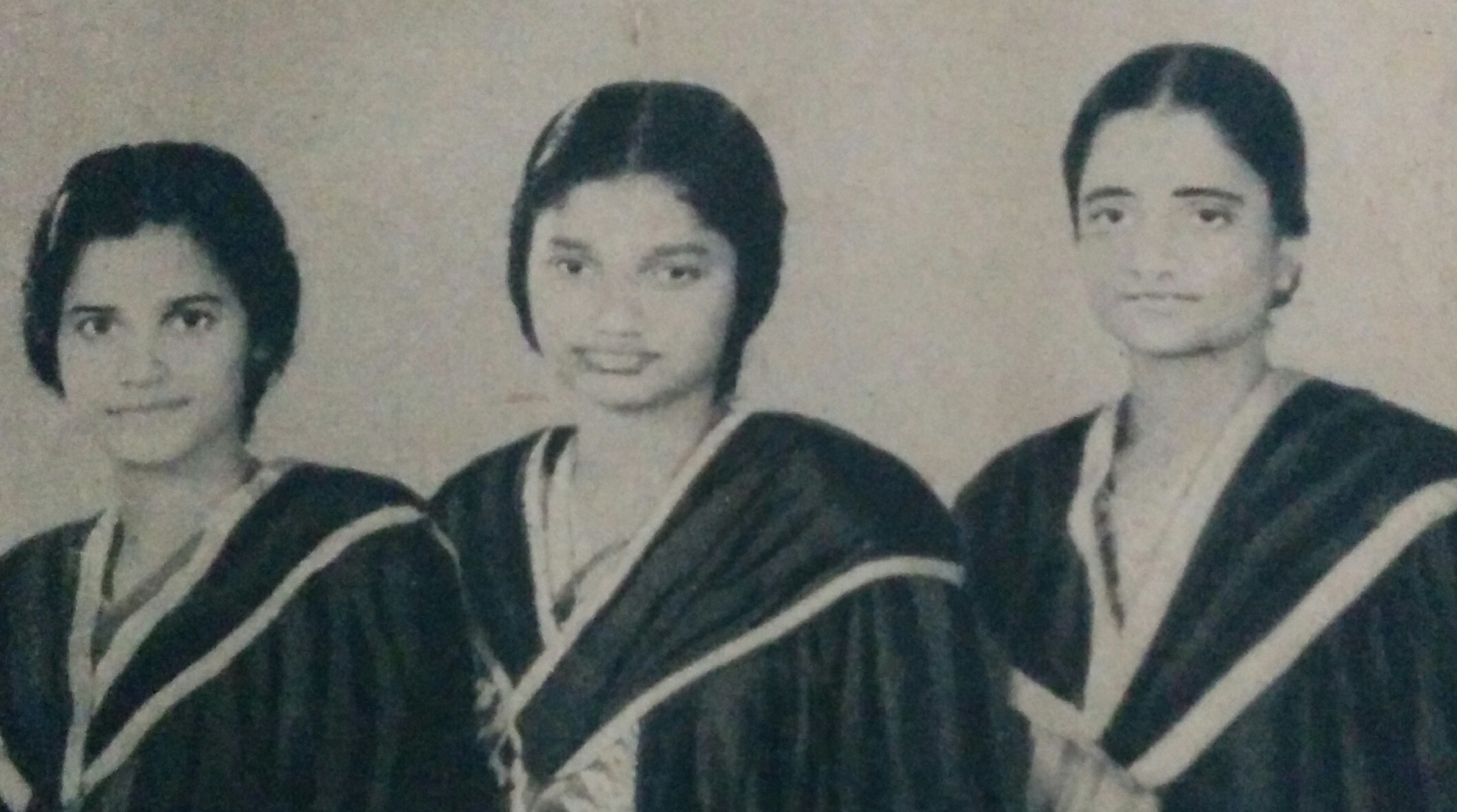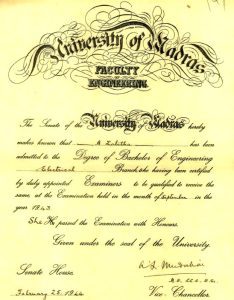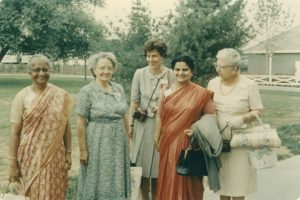A Lalitha's 103rd birth anniversary: Woman who completed her intermediate exam after she became a widow. And went on to study engineering.

PK Thressia, Leelamma George, and A Lalitha (left to right), the first women graduates of College of Engineering, Guindy (Twitter/Shantha R Mohan)
1964. New York. The Society of Women Engineers’ first international conference.
A woman clad in a demure saree ascends to the podium for her talk and begins thus: “If I had been born 150 years ago in my country, I would have been burned at the funeral pyre with my husband’s body.”
That was enough for the world to sit up and take notice of A Lalitha, the first woman engineer from India.
Born in a middle-class family in Madras on 27 August, 1919, Lalitha got married in 1934, when she was just 15. After completing SSLC, Lalitha put an end to her studies to take care of her family. Her daughter Syamala was born in 1937. Lalitha’s husband died when Syamala was only four months old.
An 18-year-old widow with a four-month-old daughter, Lalitha returned to her parents. Lalitha’s father, Pappu Subbarao, a professor in the College of Engineering (CEG), Guindy, was a go-getter and a visionary. The man was persistent in his efforts to educate his daughter.
In order to be self-sufficient, Lalitha too wanted to get a professional degree. With support from her family, Lalitha studied at the Queen Mary’s College in Madras and cleared the intermediate exam.
Though medicine had a greater appeal for Lalitha, she wasn’t sure of devoting time and energy to complete the rigours of medical studies. She chose engineering instead, which allowed her the time to care for her infant daughter.
Yet, technical education was in its nascent stage in India for Indians then, and a taboo for women. No woman was known to have enrolled in an engineering course. Lalitha’s father Pappu wouldn’t sit back and he put up a special request to the then Principal of CEG Guindy, Dr KC Chacko, that his daughter be permitted to take up an engineering course.
A reluctant Chacko referred the peculiar request to Sir RM Statham, then director for public instruction, for his perusal. Statham was more open to women entering the technical institute and accorded permission. Following in the footsteps of her father and brothers, Lalitha took up electrical engineering.

Degree certificate of Lalitha. ‘He’ has been crossed out and ‘She’ has been written on the certificate (Shantha R Mohan)
There was no other woman student in the college. Her father was pragmatic and thought of a unique solution for his daughter’s loneliness. He put up an advertisement in a newspaper, inviting women to take up engineering courses! The ploy worked: Two more women joined CEG, PK Thressia and Leelamma George. They were intent on taking up civil engineering, while Lalitha stuck to her choice of electrical.
College days became more bearable with company and Lalitha excelled in her studies. She completed engineering with honours in September 1943 and became the country’s first woman engineer!
A government ruling was in place from 1930–31 that required electrical engineers to study for four years on campus and one year to be spent on practical training. As the final requirement for the degree, Lalitha underwent a one-year apprenticeship at the Jamalpur Railway Workshop.
She joined the Central Standards Organisation, Simla, in 1944 as a research assistant. Lalitha chose this job as it allowed her to raise her daughter Syamala with the help of a sister-in-law who lived there.

A Lalitha (left) at the 1964 New York World’s Fair during the First International Conference of Women Engineers and Scientists. Second from right is N Sainani, a Canadian delegate of Indian origin (Shantha R Mohan/Society of Women Engineers National Records, Walter P. Reuther Library and Archives of Labor and Urban Affairs, Wayne State University)
She quit the job and helped her father with his electrical engineering research, before joining Associated Electrical Industries, Calcutta, in 1948. As part of the new job, she even worked on the Bhakra Nangal Dam project.
Invited to the First International Conference of Women Engineers and Scientists (ICWES) in New York that took place in June 1964, Lalitha attended in her personal capacity and spoke about increasing the participation of women in science.
The first woman engineer from India retired in 1977 and pursued her passion of travel with her sister. She died in 1979, aged just 60.
(The author wishes to acknowledge the book by Shantha Mohan, ‘Roots and Wings: Inspiring Stories of Indian Women in Engineering’, which was helpful in the preparation of this article)

Feb 28, 2024

Feb 18, 2024

Feb 12, 2024

Feb 11, 2024

Feb 06, 2024

Aug 29, 2023